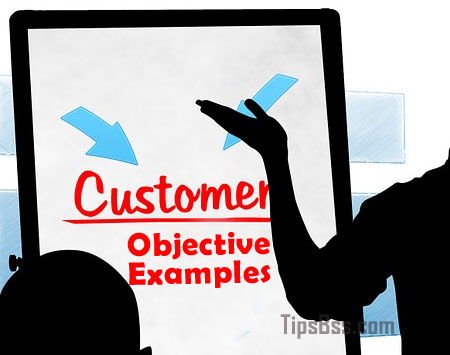Crafting Professional Correspondence: Essential Email Etiquette Tips
Master the art of professional emails with these essential tips. Start with a clear and concise subject line that reflects the email’s purpose. Address the recipient formally unless a more casual tone is appropriate. Use a professional email address and signature to create a positive impression. Craft a well-structured email with a polite greeting, body, and closing. Be mindful of tone and language, maintaining a professional and respectful demeanor. Proofread your email for grammar and spelling errors before sending. Respond promptly to emails, acknowledging receipt and providing necessary information. Avoid using all caps or excessive punctuation to prevent misinterpretation. Attach files and documents judiciously, ensuring relevance to the email’s content. End your email with a professional closing and your contact information for easy follow-up.

Use Clear and Concise Subject Lines:
Use clear and concise subject lines that reflect the purpose of your email. This helps recipients quickly understand the content and urgency of your message.
- Use clear and concise subject lines that reflect the purpose of your email.
- Clear subjects improve the chances of your email being opened and understood promptly.
- Avoid generic or misleading subject lines to maintain trust with recipients.
Address Recipients Appropriately:
Address recipients appropriately by using their names and titles. This shows professionalism and consideration, creating a positive impression from the beginning.
- Address recipients appropriately by using their names and titles when known.
- Personalized greetings demonstrate respect and attention to detail in professional communication.
- Verify the correct spelling and titles to avoid errors in addressing recipients.
Start with a Polite Greeting:
Start with a polite greeting to set a positive tone. Use “Dear [Name]” for formal communication and consider the context for more casual or team-based greetings.
- Start with a polite greeting to set a positive tone for your email.
- Consider the formality of your relationship with the recipient when choosing a greeting.
- Opening emails with a courteous greeting contributes to a professional and respectful communication style.
Be Mindful of Tone:
Be mindful of tone to convey professionalism and respect. Choose words carefully and avoid language that may be interpreted as rude or unprofessional.
- Be mindful of tone to convey professionalism and respect in your emails.
- Choose words carefully, and consider how your message may be perceived by the recipient.
- Avoid using all caps, excessive exclamation points, or language that may be interpreted as confrontational.
Provide a Clear and Concise Message:
Provide a clear and concise message with a logical structure. Organize your thoughts, and use short paragraphs for readability. Clearly state your purpose and any necessary information.
- Provide a clear and concise message with a logical and organized structure.
- Break content into short paragraphs to enhance readability and understanding.
- Clearly state your purpose, and include all relevant information to address the recipient’s needs or inquiries.
Use Professional Signatures:
Use professional signatures that include your full name, job title, and contact information. This ensures recipients have the necessary details to reach you or follow up on your message.
- Use professional signatures including your full name, job title, and contact information.
- Include links to relevant social profiles or your company website for additional context.
- A professional signature provides recipients with the information they need for future correspondence.
Proofread Before Sending:
Proofread before sending to catch errors. Typos and grammatical mistakes can diminish the professionalism of your email. Take a moment to review your message before hitting “Send.”
- Proofread before sending to catch errors and ensure the professionalism of your email.
- Check for typos, grammatical mistakes, and clarity of expression.
- Reviewing your email before sending contributes to a polished and reliable communication style.
Use Professional Language:
Use professional language suitable for the context. Tailor your tone and vocabulary based on the formality of the relationship and the purpose of your email.
- Use professional language appropriate for the context of your email.
- Tailor your tone and vocabulary based on the formality of the relationship and the purpose of your communication.
- Professional language reflects a level of respect and consideration in your emails.
Include a Polite Closing:
Include a polite closing to wrap up your email. Common closings include “Sincerely,” “Best Regards,” or “Thank You.” Choose one that aligns with the tone of your message.
- Include a polite closing to conclude your email professionally.
- Closings like “Sincerely,” “Best Regards,” or “Thank You” convey a sense of courtesy and consideration.
- Select a closing that aligns with the tone and formality of your message.
Email writing tips for professionals
Advantages of Following Email Etiquette Tips:
- Enhanced professionalism and credibility in professional communication.
- Improved clarity and effectiveness with clear subject lines and structures.
- Maximized positive impression with formal address and professional tone.
- Reduced likelihood of misunderstandings through mindful language use.
- Promotion of a positive and productive email correspondence experience.
Disadvantages of Ignoring Email Etiquette Tips:
- Increased risk of emails being overlooked with unclear subject lines.
- Challenges in creating a positive impression without professional language.
- Missed opportunities for effective communication with poorly structured emails.
- Higher likelihood of miscommunication with inappropriate tone or language.
- Potential negative impact on professional relationships and reputation.
Things to Avoid for Successful Professional Emails:
Avoid neglecting subject lines; they are crucial for attention and clarity. Minimize using overly casual language in professional correspondence. Refrain from neglecting proofreading; errors can diminish professionalism. Avoid delaying responses; promptness is key in professional communication. Stay clear of sending irrelevant attachments; prioritize relevance. Consult with experienced professionals or explore email etiquette guides for specific questions or concerns.







